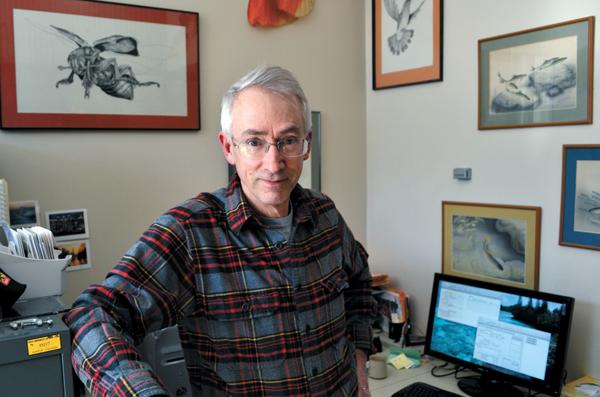
David Sloan Wilson, a professor of biological science at Binghamton University, has garnered attention concerning his new book, “The Neighborhood Project: Using Evolution to Improve My City, One Block at a Time.”
The book was reviewed in the Sept. 1 issue of The New York Times by Mark Oppenheimer, a columnist for the paper. The piece was titled “The Evolution of Binghamton, Block by Block.”
“The Neighborhood Project” narrates Wilson’s endeavors to improve the Binghamton community through the work of the Binghamton Neighborhood Project (BNP), a collaboration between BU faculty and community partners with the goal of improving the quality of life enjoyed by people in the Southern Tier.
According to its website, the BNP strives to use “the most recent social scientific theory and methods to measure and improve human welfare on a neighborhood-by-neighborhood basis.”
Headed by Wilson, the team is comprised of undergraduate and graduate students, faculty and community members and entails a variety of smaller and more specific projects, including a Design Your Own Park project and a “Regents Academy.” Affiliated with the BNP are numerous partners including the United Way of Broome County, the Binghamton Regional Sustainability Coalition, the West Side Neighborhood Project and the city of Binghamton, as well as 15 departments at BU.
The Design Your Own Park project challenges people to submit proposals for the design of a park to be installed in a vacant lot. The goal is to empower neighborhoods and restore outdoor play at a citywide scale, according to their website. Right now five projects are in progress at varying levels of completion, with most beginning implementation in 2011.
The Regents Academy enrolls at-risk Binghamton High School students in a special program designed to improve their academic performance and interest in learning. Chosen students enrolled in the academy are taught apart from the other students.
“What’s special about the Regents Academy is it’s not based on educational theory in a narrow sense,” Wilson said. “It’s based on a general theory on what is needed for a group to cooperate to do anything.”
Most of the Regents Academy students score just as well as their control group counterparts on the Regents exam, a standardized New York State test.
Other BNP projects deal with matching responsible tenants and landowners and working with community organizations to better the city.
Wilson stressed the importance of science, specifically evolutionary science, to the BNP and, more broadly, in the process of improving neighborhoods.
“We use physics and chemistry to build the physical structure of our cities. And we need a theory to manage the human social life that takes place within our city,” Wilson said. “So we need a theory for human’s social behavior and it turns out that for that we need evolution.”
Wilson said he and his colleagues are careful in designing these initiatives so that they do not promote inequality.
“The bottom line is that what’s going to make our policy benign or insidious is all a matter of whether [the public] decides to do it, as opposed to having it imposed upon [them],” he said.
Robert Kadar, a graduate student in the anthropology department, has been working with the project for two years. He said he began working on the project because he has always been a “hands-on person” and because he enjoys applying knowledge from the classroom to the real world.
“The BNP is a great vehicle to use science for improving the quality of life in the city of Binghamton. I was immediately attracted to [its] potential,” Kadar said. “The fact that neighborhood residents are communicating, sometimes for the very first time, is, I believe, a first step toward solving common problems and building cooperative units.”
The Binghamton Neighborhood Project also serves as a bridge between the University and the town. Kadar said he has found working for the BNP insightful. He also found that a lot of his preconceptions about Binghamton residents were unfounded.
“You realize that most people from the city of Binghamton are friendly, cooperative and want to communicate with people,” he said. “I fell prey to the unfortunate stereotypes that are placed on ‘townies’ by ignorant students. As I conducted door-to-door surveys on the West Side of Binghamton it became clear to me how wrong I was.”


